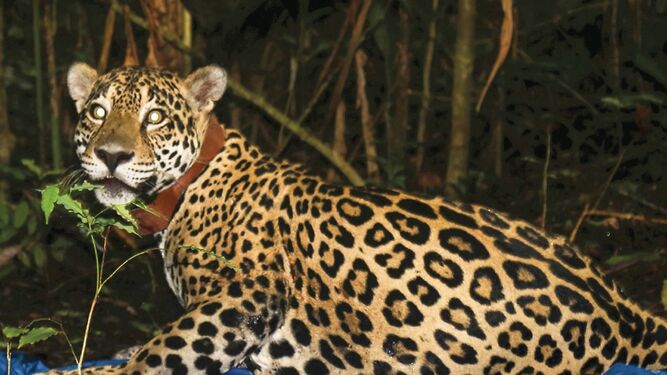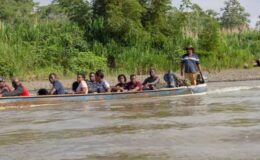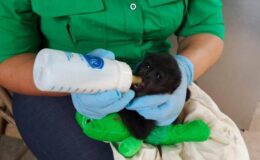PANAMA steps up as Global Partner in protecting Endangered Species.
- By : Panama Now
- Category : Conservation, Environmental, Human Interest

The largest of cat species indigenous to PANAMA. Protect the Jaguar. 40% of natural territory has already been taken.
Chucunaque is 4 to 6 years old, 55 kilos, two puppies and his skin looks dark stained. It is the first jaguar (Panthera onca) that wears a GPS collar for its tracking in Panama with the purpose of knowing “its displacements, home range and habitat use in a landscape highly modified by human activities” data that will allow to expand the study of this species in the country, said spokesmen for Fundación Jaguará Panamá, the scientific organization responsible for the project.
The collar will provide data on the movements of Chucunaque for a year and then, thanks to a special system, the device will open and fall from the animal’s neck. “This is a historical milestone for science and scientific research in Panama as it is the first time this device is placed on a jaguar to follow its movements and know how long they remain in an area. Not only will it help generate more information about this species, but it will also propose better conservation strategies, ”said Ricardo Moreno, president of the Yaguará Panama Foundation, associate researcher at the Smithsonian Tropical Research Institute and an emerging National Geographic explorer.
“This technology will also allow to locate and protect Chucunaque, as well as its two puppies, in addition to carrying out education and other activities to help improve the coexistence between people and these wonderful species,” said Moreno.
40% of the jaguar’s natural habitat has been lost in Panama. AFP
In the region, this system has only been used to follow the trail of jaguars in Paraguay.
Fundación Yaguará Panama currently uses this GPS technology to monitor other wild cats such as ocelots and pumas and species such as pigs and coyotes and in 2020 the plan of the scientific group is to place new necklaces to four jaguars, says Natlia Young, vice president of Yaguará Panama.
The jaguar, the largest feline in the Americas, is one of the most emblematic and charismatic species of tropical forests, but is at risk of extinction, Moreno highlights. In Panama alone, between 1989 and 2019, Yaguará Panama has recorded the death of 350 jaguars mainly due to conflicts with humans. “It is easily double the figure because there are many cases of which nobody finds out,” says the biologist.
More than 50% of the habitat of this species has disappeared and Panama is key to its conservation as it is the narrowest part of the Mesoamerican Biological Corridor, the natural land bridge between North America and South America for wildlife species. It is estimated that in Panama there are between 900 and one thousand jaguars.
Protection measures

In addition to monitoring jaguars with the collar, trap cameras and other systems, Yaguará Panama develops other initiatives for jaguar care such as education and guidance on farms adjacent to the habitat of the big cat to avoid conflicts between the owners of the land and the jaguar for the predation of cattle and other domestic animals.
Also, says Moreno, the scientific and environmental foundation works to implement the first jaguar census of Panama in the following years, to learn more precise information on this species.



No Comments